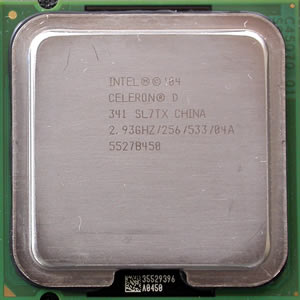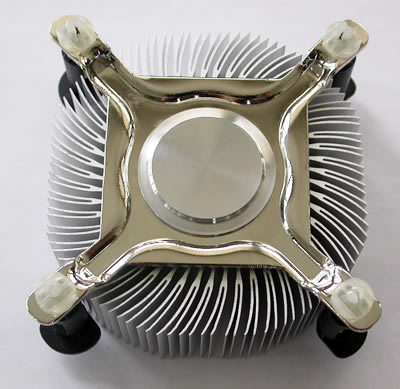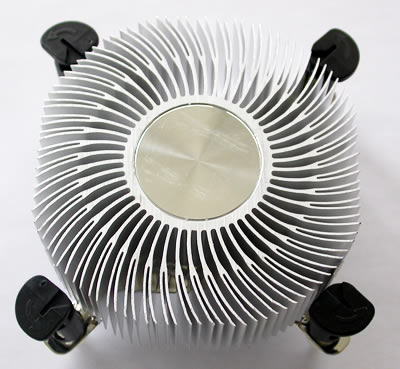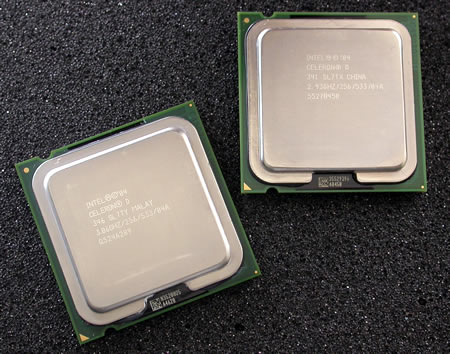Intel Celeron D 341, 346
1. Introduction

Intel is one the major CPU manufacturers worldwide. Today, Intel supplies the computing and communications industries with chips, boards, systems and software building blocks that are the "ingredients" of computer systems, servers, networking and communications products.
We recently received from Intel, two Celeron processors from the D series, the 341 and 346 models, running at 2.93 GHz and 3.06 GHz respectively. The Celeron D series, according to the manufacturer, delivers a balanced level of proven technology and exceptional value for desktop PCs. It concerns an affordable solution of processors coupled with decent performance.
Specifications for our two Celeron D processors can be found in the table below:
| Processor | Intel Celeron D Processor | |
| Processor Number | 341 | 346 |
| Architecture | 90 nm process technology | |
| L2 Cache | 256KB | |
| Clock Speed | 2.93 GHz | 3.06 GHz |
| Front Side Bus | 533 MHz | |
| Socket | 775 | |
| Intel Extended Memory 64 Technology | Yes | |
| Execute Disable Bit | Yes | |
| Features | - Data Flow Analysis - Speculative Execution - Non-Blocking Level 1 Cache - Streaming SIMD Extensions 3 - Dual Independent Bus (DIB) |
|
Architecture
The size and spacing of the processors's transistors (silicon etchings), which
partially determine the switching speed. The diameter of transistors is measured
in microns. One micron is one-millionth of a meter. The 90 nm (a nanometer is
one-billionth of a meter) process combines higher-performance, lower-power transistors,
strained silicon, high-speed copper interconnects and a new low-k dielectric
material.
Clock Speed
The speed at which the processor executes instructions. Every processor contains
an internal clock that regulates the rate at which instructions are executed.
It is expressed in Megahertz (MHz), which is 1 million cycles per second or
Gigahertz (GHz), which is 1 billion cycles per second.
Front Side Bus
The speed of the bus that connects the processor to main memory (RAM). As processors
have become faster and faster, the system bus has become one of the chief bottlenecks
in modern PCs. Typical bus speeds are 400 MHz, 533 MHz, 667 MHz, and 800 MHz.
L2 Cache
The size of 2nd level cache. L2 Cache is ultra-fast memory that buffers information
being transferred between the processor and the slower RAM in an attempt to
speed these types of transfers.
EM64T
Intel Extended Memory 64 Technology (Intel EM64T) is an enhancement to Intel's
IA-32 architecture. The enhancement allows the processor to run newly written
64-bit code and access larger amounts of memory.
Execute Disable Bit
Can improve protection against malicious "buffer overflow" attacks
when properly enabled with a supporting operating system.


As you may have noticed, Intel manufactures its processors in many different asian countries. Our samples were from China and Malaysia.
The retail box includes the CPU, cooling system, warranty and installation manual.

The stock cooling system :

The base is made of aluminium. Other Intel processors we have reviewed have had a copper base.

Removing the fan to reveal the heatsink, shows that the base the fan sits on, is solid aluminum.

In this review, we will compare the two Celeron D processors and put them up against the P4 530 and AMD Athlon 64 3000+.






















